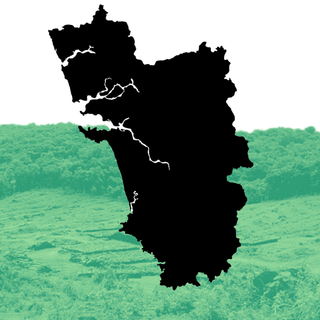Wildfires have engulfed a vast chunk of the Similipal Tiger Reserve in Odisha, threatening colossal, long-term damage. According to local media reports, fires have raged for more than 10 days in the protected forests located in Odisha’s Mayurbhanj district. The state forest department is working to bring the situation under control.
Forest officials say no damage to dense forests — areas with more wildlife and less human activity — or deaths to wildlife have been reported, and the state government says the core area of the reserve has been untouched by fire. However, the fire has spread to one-third of the reserve, and environmentalists and local activists are raising alarm over long-term ecological damage. “The scale of fire is massive,” Pradesh Congress president of the state, Niranjan Patnaik, wrote on Twitter. “If the govt does not try to combat it, Odisha’s forest cover may never be the same again.”
Odisha has been the leading wildfire hotspot in the country, with as many as 7,100 fire spots reported there since November 1. According to the Forest Survey of India, the state’s wildfire count surpassed itself last week, when Odisha saw the highest number of forest fires — around 5,200 — in a single week ever, last week.
Forest officials have said that forest fires usually take place between the summer months of February and April every year. While many locals claim hunters are responsible for the fires, which they use to aid poaching, forest officials attribute the fires to the collection of forest produce, such as mahua flowers and kendu leaves, by the locals. “Local people usually set sal leaves lying on the ground on fire to collect Mahua and other non-timber forest produce,” ” J. D. Pati, Deputy Director of Similipal, said to the New Indian Express. “The heatwave condition in Mayurbhanj aided the fire.”
Related on The Swaddle:
India’s Forests Expanded This Decade, Yet Indigenous Communities Are Still Being Forced Out: Report
The collection of mahua has been a persistent threat to the biosphere. Mahua flowers, which are used to make country alcohol, are usually collected between March and April when the flowers fall from the trees. But the shedding of the leaves at this time, too, covers the flowers. So, collectors burn the leaves to get the flowers, which don’t catch fire.
The state forest department is taking initiatives to curb such incidents and village-level meetings are being conducted to spread awareness among the locals and ask them to refrain from these practices, added Pati. In many areas, officials have trained the mahua collectors to fix large nets under the trees so that the flowers fall on them.
Forest officials have also attributed the fires to unextinguished beedi and cigarette butts left lying in the forest.
Regardless, the magnitude of the fires are compounded by Odisha’s current heatwave, which has seen some cities in the state crossing the 40-degree Celsius mark in February. The unprecedented dryness caused by the early arrival of summer has also contributed to the immense fires.
“More than 1,200 field staff, 225 fire watchers, and squads with 240 fire blowers are working round the clock to prevent further spread,” M. Yogajayananda, Regional Chief Conservator of Forest, Baripada told The Hindu. A senior forest official said a special squad would be formed soon to keep a watch on forests and those who are setting fires.




